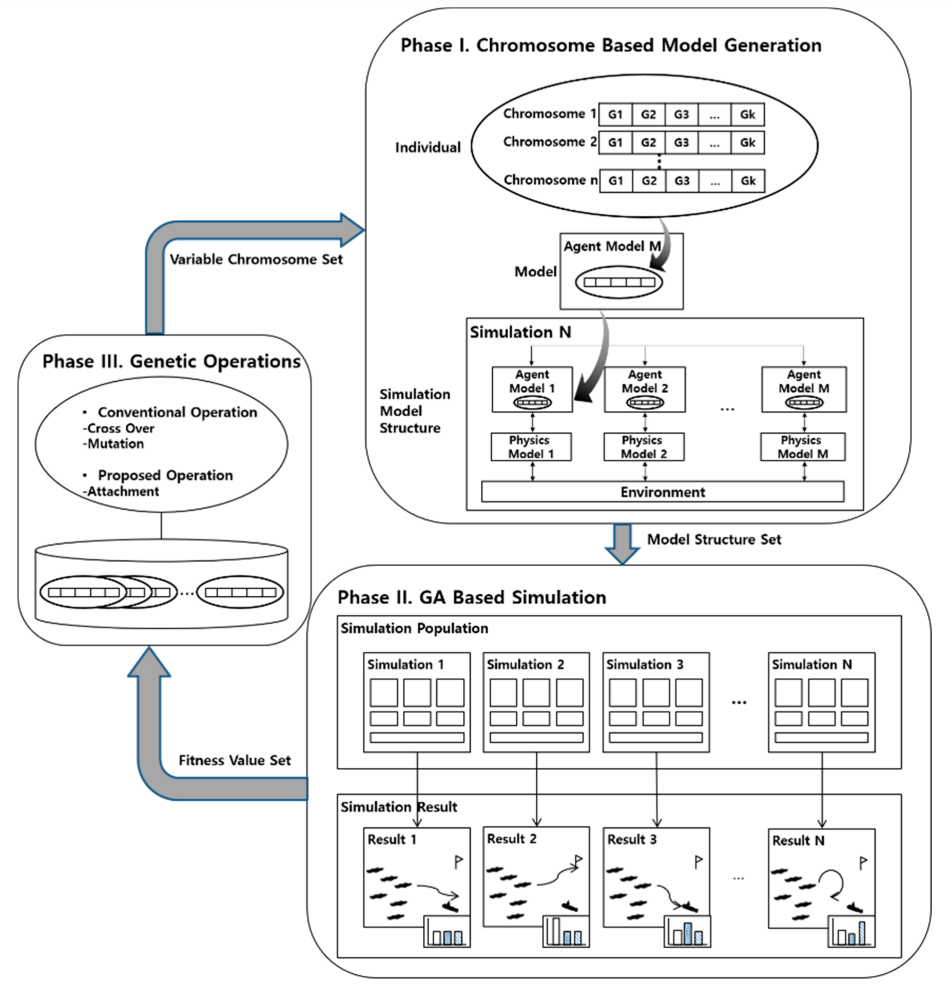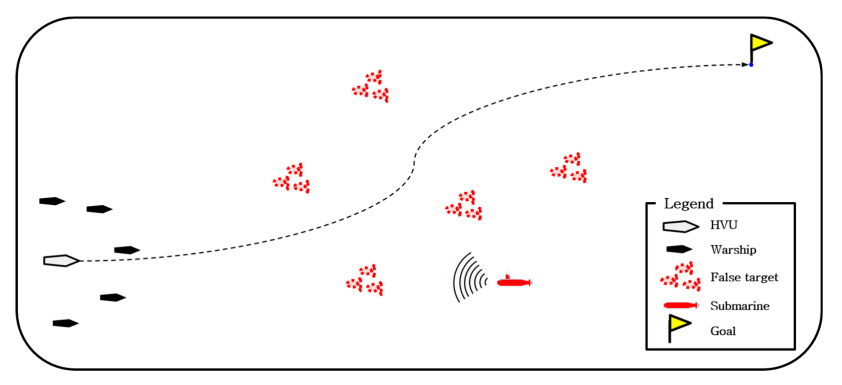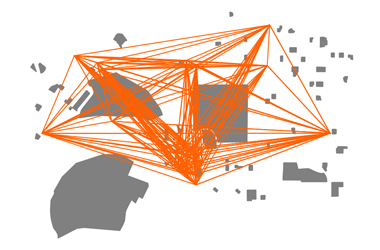연구 소개

- 연구
- 연구 소개
Design of Warship Simulation Using Variable-Chromosome Genetic Algorithm
- AI융합대학
- 2019-10-02
지승도 교수의 지능 시스템 연구실에서 발표한 논문 "Design of Warship Simulation Using Variable-Chromosome Genetic Algorithm"이 "Multi-Agent Systems" 2020년도 특집호에 게재되었다.
A genetic algorithm (GA) is a global search algorithm based on biological genetics. GAs are generally used for industrial applications, artificial neural networks, web applications, the defense industry, and so on. However, it is difficult to apply GAs to more complex situations because of the fixed number of chromosomes. In this research, in order to overcome this limitation, we propose a variable-chromosome GA with a chromosome attachment feature. Verification of the algorithm is carried out through anti-submarine high value unit (HVU) escort mission simulations. Ultimately, it is confirmed that the GA using the variable chromosome is more effective in dealing with highly complex missions, whereby the number of chromosomes gradually increases.

[Figure 1] Overall methodology
the chromosomes organized by genes. These chromosomes, which are loaded on each model, are composed of 10 random chromosomes for the first generation. There are 10 chromosomes in an individual for the first generation, however, more or less than 10 chromosomes can be implemented via attachment after some generations have passed. Accordingly, it is possible to achieve flexible evolution, as the number of chromosomes is increased or decreased as necessary.

[Figure 2] Mission scenario
-
A Multi-Trip Vehicle Routing Problem for Small Unmanned Aircraft Systems-Based Urban Delivery
최영훈 교수의 IASL 연구실에서 발표한 논문 "A Multi-Trip Vehicle Routing Problem for Small Unmanned Aircraft Systems-Based Urban Delivery"가 "Journal of Aircraft 2019 (JA 2019)"에 게재되었다.
2019-11-06
논문 사이트로 이동
[그림 1] 도심항공네트워크 생성을 위한 프레임 워크
최영훈 교수의 IASL 연구실에서는 다개체 무인기를 활용하는 다양한 시나리오에 대한 임무 및 경로 계획 최적화에 관한 연구를 진행하고 있다. Journal of Aircraft에 실린 “A Multi-Trip Vehicle Routing Problem for Small Unmanned Aircraft Systems-Based Urban Delivery” 연구에서는 3차원 point cloud data를 활용하여 3차원 도시모델을 생성하고 이를 기반으로 항공 네트워크를 형성하는 프레임워크를 제안하였다. 또한 생성한 항공 네트워크를 활용하여 다양한 드론 배송 시나리오를 graph theory와 linear programming을 바탕으로 수학적인 모델링(정식화)를 통하여 비교 분석한 결과를 제시하였다.
-
A Systematic Approach to Threat Modeling and Security Analysis for Software Defined Networking
엄태훈 교수의 연구실에서 발표한 논문 "A Systematic Approach to Threat Modeling and Security Analysis for Software Defined Networking"이 "IEEE Access" 2019년 호에 게재되었다.
2019-09-09
논문 사이트로 이동
[Figure 1] A framework for security assessment in SDN
Software Defined Networking (SDN) extends capabilities of existing networks by providing various functionalities, such as flexible networking controls. However, there are many security threat vectors in SDN, including existing and emerging ones arising from new functionalities, that may hinder the use of SDN. To tackle this problem, many countermeasures have been developed to mitigate various threats faced in SDN. However, their effectiveness must be analyzed and compared to fully understand how security posture of SDN changes when the countermeasure is adopted. Also, it becomes difficult to optimize the security of SDN without using a systematic approach to evaluate the security posture of SDN. In this paper, we propose a novel framework to systematically model and analyze the security posture of SDN. We develop a novel graphical security model formalism named Threat Vector Hierarchical Attack Representation Model (TV-HARM), which provides a systematic approach to evaluate threats, attacks and countermeasures for SDN. The TV-HARM captures different threats and their combinations, enabling security risk assessment of SDN. In addition, we define three new security metrics to represent security of SDN. Our experimental results showed that the proposed security assessment framework can capture and evaluate various security threats to SDN, demonstrating the applicability and feasibility of the proposed framework.
